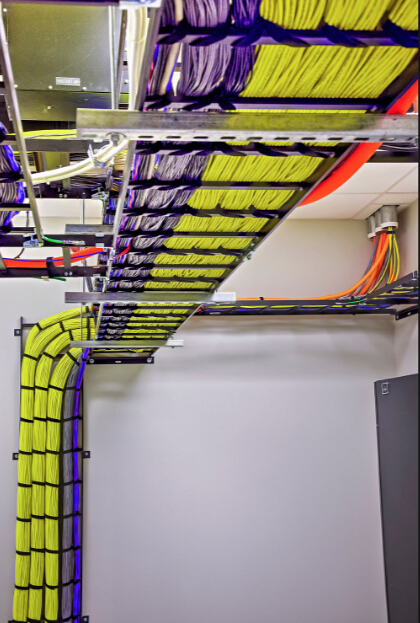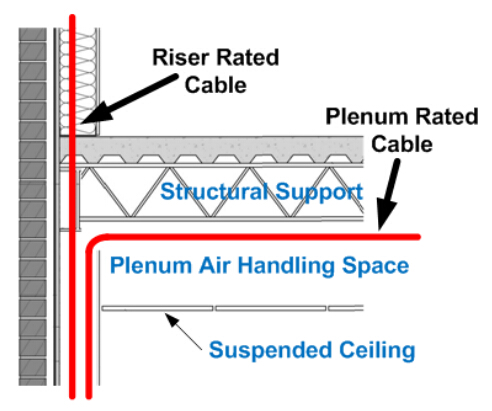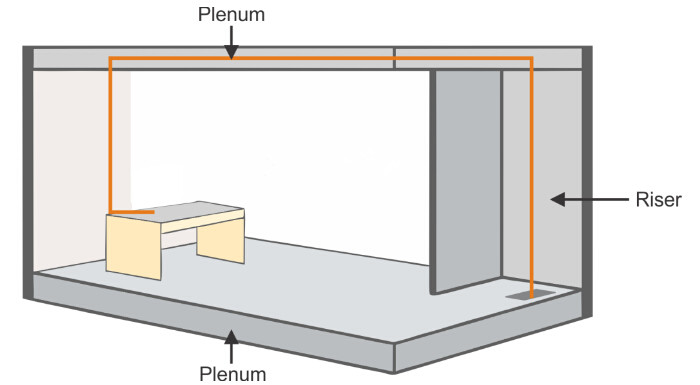When doing data and voice cabling in premise environment, there is a common question that every installer may confront: Should I use plenum or riser rated cable? Plenum and riser here indicate flame ratings for cables which are defined by National Electric Code (NEC), with the purpose of preventing the spread of fire and smoke in commercial and residential buildings. Then, what is the difference between plenum and riser rated cable? This article will explain to you by making a comparison between them.
The flame rating of cables differs according to various installation situations. Thus to decide which rating is appropriate for your installation environment is critical. So let’s just begin with the basic definition of the plenum and riser cable.
Plenum Cable: A plenum refers to any enclosed area that facilitates environmental air handling. Such as an air conditioning duct or an air routing drop ceiling. It can be any air space between walls, under floors, or dropped ceilings. Plenum cable is designed with a fire-retardant plastic jacket, that is laid in the plenum spaces of buildings. It is held to the most stringent testing of the cables rated by the NEC, rated for both flammability and smoke generation.

Riser Cable: Riser cables do what their name indicates—they rise between non-plenum vertical applications like floors of multi-story buildings. Riser cables may also penetrate either fire rated floors or walls. Described as backbone cables, riser cables serve as the main conduit of a distribution system for data, voice or video. The cables are only subjected to flame tests.

In this part, we will illustrate the difference between plenum rated cable and riser rated cable from the perspective of their common application situations.
Plenum rated cable is usually made with strict standards required by a plenum space. It is installed to prevent contamination of the air. Requirements for plenum cables dictate the rate at which a flame spreads, as well as the maximum amount of smoke a burning cable may produce. This kind of cable can be applied to commercial and multi-family residential buildings. Plenum rated cables may substitute for riser and general purpose rated cables.

Riser rated cable is typically run between multiple floors of a building through open vertical shafts. Although these pathways do not handle environmental air, they can easily conduct a fire from one floor to the next if the cable is not properly rated. And the vertical spread of flame would pose a big threat to the safety. To minimize the spread of fire, riser rated cable is required for carrying a minimum of a riser rating. Riser cables may be used for different forms of data communications which also include CCTV video access. It is ideal as well for voice communications.
When deploying cable for indoor applications, to plan and design beforehand is definitely critical yet beneficial. If the cables must be deployed in the plenum, it is important to remember that cables that will be deployed there must reach several standards on flammability, heat resistance, and amount of smoke cable generates when burning. Another essential part of installing cable within a building is riser cable deployment. Since riser cable should go through the whole building, it is rather vulnerable in case of fire. This is why riser cable has even more strict fireproof standards than the plenum one. The picture below illustrates the common design of the plenum and riser rated cable in the building.

Although cable rating is sometimes overlooked by system designers when selecting cables, it is rather vital to the whole installing environment. We have explained the difference between the plenum and riser cable from the perspective of the common application and cabling design, hope that would be informative enough.